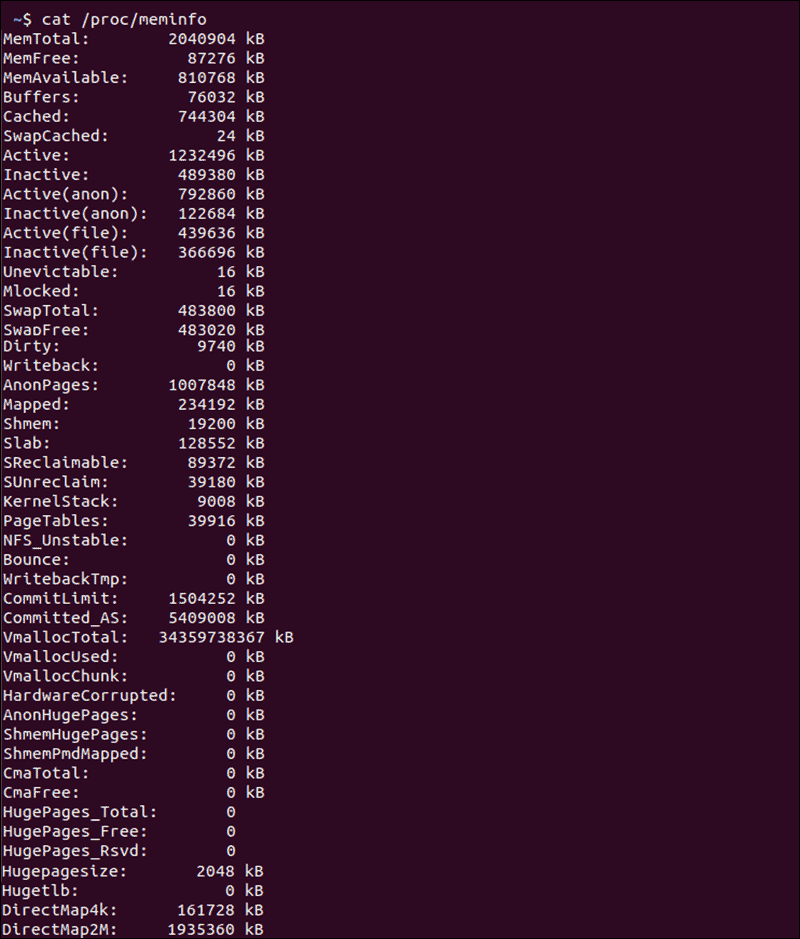
- #Check cpu and memory utilization in linux how to#
- #Check cpu and memory utilization in linux install#
- #Check cpu and memory utilization in linux code#
- #Check cpu and memory utilization in linux download#
When you have some spare time, take a look at the /proc filesystem on your Linux system for other system information you can find, including /proc/loadavg, /proc/vmstat, and much more. After searching online and combining a few answers from other questions on stackflow. CPU Usage - top -b -n 1 grep Cpu Mem Usage - top -b -n 1 grep 'KiB Mem'. There is one useful command for CPU/mem usage - top.
#Check cpu and memory utilization in linux how to#
I hope these Linux processor and memory commands have been helpful. I'm sure you figure it out yourself how to do that, have fun. Summary: Linux processor and memory commands The MEM column provides information about the used share of the available physical memory for each running process. When I issue the Linux memory information command, I see the following output:Īs you can see, my current Linux system has 2 GB RAM, with all the additional memory information shown there. The header of the output includes information about the system’s total, free, and used physical and swap memory. Model name : Intel(R) Pentium(R) 4 CPU 3.00GHzįlags : fpu vme de pse tsc msr pae mce cx8 apic mtrr pge mca cmov pat pse36 clflush dts acpi mmx fxsr sse sse2 ss ht tm pbe constant_tsc pni monitor ds_cpl cid xtprįrom that output I can see my current system is a two-processor Intel system, with additional information about the Intel CPU (CPUs, actually). This command monitors CPU usage, utilization, Linux process statistics, and memory utilization. When I issue that Linux processor information command on my current hardware system, I see this output:

(See below for sample output.) Linux processor command output To see your Linux memory information and memory stats use this command:

(See below for sample processor output.) How to show Linux memory information To see what type of processor/CPU your computer system has, use this Linux command:Īs you can see, all you have to do is use the Linux cat command on this special /proc/cpuinfo file on your Linux system.

However, you should make your own decision if you trust the fork in the long term.Linux FAQ: How can I find Linux processor and memory information? (Also written as, How can I find Linux CPU information?, How can I find Linux RAM information?) How to show the Linux CPU/processor There is a fork of the same extension at which have fixes in place while original extension is being updated.
#Check cpu and memory utilization in linux code#
You may need to tweak the code if you get an error.Enable extension with Ubuntu Extension Manager.You can use this script to generate a CPU, memory and swap usage for a multiple Linux system. This script will help you to create a report for you. Restart OS (there is no reload mode in Wayland as I can see) You have a small infrastructure and want to check multiple system performance simultaneously for some reason.browser, Extension Manager) as these have older published versions at the time of this post.
#Check cpu and memory utilization in linux install#
DO NOT install with other utilities (e.g.
#Check cpu and memory utilization in linux download#

You need to install Gnome Tweaks ( sudo apt install gnome-tweaks). Here is a link to a tutorial with some screenshots and more details: Ubuntu show CPU and Memory usages in Top BarĮdit: I figured out how to use gnome-shell-extension-system-monitor for this. There you can just tick the checkboxes next to the resources you wish to show on your top bar. To get the program to show memory usage (and other resources), click the graph and go to "Preferences". However, I found a different program that allows me to do just that:Īfter logging out and then logging back in you should see a little graph on the top bar showing CPU usage. On Ubuntu 20.04 I was unable to get my CPU and Memory usage to appear on the top bar with the gnome system monitor.


 0 kommentar(er)
0 kommentar(er)
